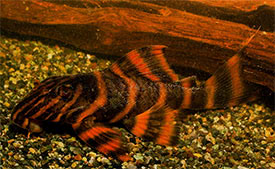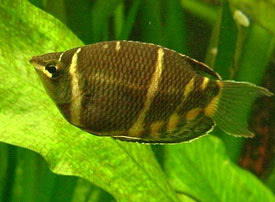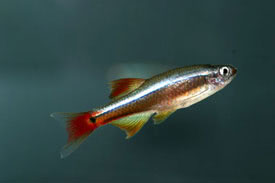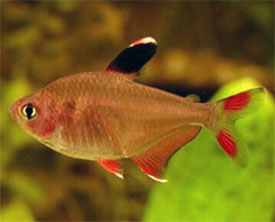Panaqolus claustellifer - L-306 Catfish
 Magyarul / Hungarian
Magyarul / Hungarian

 Magyarul / Hungarian
Magyarul / Hungarian

- Scientific name: Panaqolus claustellifer
- Synonyms: LDA064 Catfish
- Common name: L-306 Catfish
- Group: Catfish
- Distribution: South America; the border between Brazil and Guyana in Rio Takutu and Rio Branco.
- Size: 10-13 cm
- Biotope: Found in shallow cataracts along the Takutu river.
- Social behavior: They can be kept in a communtity aquarium. Can be somewhat territorial towards conspecifics and similarly-shaped fishes, so many hiding places are essential for them. Roughly requiring a 30x30cm area per fish.
- Diet: Omnivorous; In the wild they feed on algae, or biofilm that found on underwater woods, and it actually eats the wood itself, possibly for digestive reasons. In the aquarium a mainly vegetarian diet is recommended, with algae wafers for plecos, beside the wood.
- Breeding: It has not been bred in aquarium.
- Tank: Minimum 100 litres
- Population: 4-5 fish for 160 litres
- Decoration: Build many hiding places of stonework and wood-stuctures. Plants are not vital and will be nibbled or destroyed. Lighting shouldn't be too bright. They also like good oxygenation and a good amount of currents.
- Temperature: 25-28 °C
- pH: 6.0-7.5
- Hardness: 1.0-10.0 dGH
- Lifespan: 8-10 years
Description: Panaqolus claustellifer has dark and light bars on its body and fins. They are very similar to L-169 (LDA001) catfish, the only difference being Panaqolus claustellifer has blood red stripes rather than beige to orange ones. This catfish is among the more rare species of the genus in the hobby, and is currently not allowed for export from Brazil.
Mature males develop noticeable odontodes along their backs, and on the pectoral fins. Males have small pointed genital papillae, whereas mature females will have large, rounded papillae. Additionally, gravid females are more plumper at the belly area, which can be more obvious when viewed from above.
Breeding is unreported in aquarium.
Sources:
http://www.fishbase.org/summary/68220
https://www.planetcatfish.com/common/species.php?species_id=923
http://www.plecoplanet.com/forum/showthread.php?t=1973
http://www.scielo.br/scielo.php?script=sci_arttext&pid=S1679-62252016000200217
https://www.scotcat.com/loricariidae/panaqolus_claustellifer.htm
http://www.fishbase.org/summary/68220
https://www.planetcatfish.com/common/species.php?species_id=923
http://www.plecoplanet.com/forum/showthread.php?t=1973
http://www.scielo.br/scielo.php?script=sci_arttext&pid=S1679-62252016000200217
https://www.scotcat.com/loricariidae/panaqolus_claustellifer.htm
Hasonló vízparamétereket igénylő fajok



























































